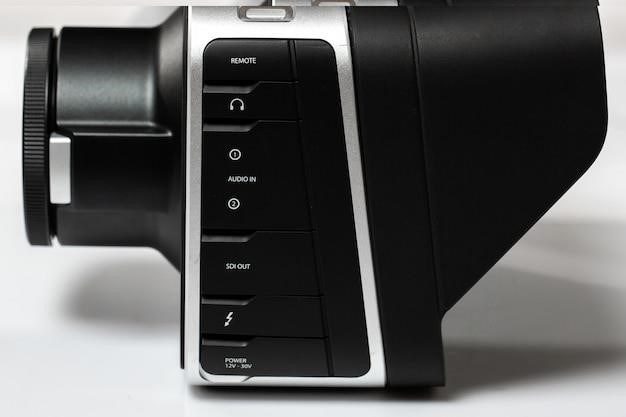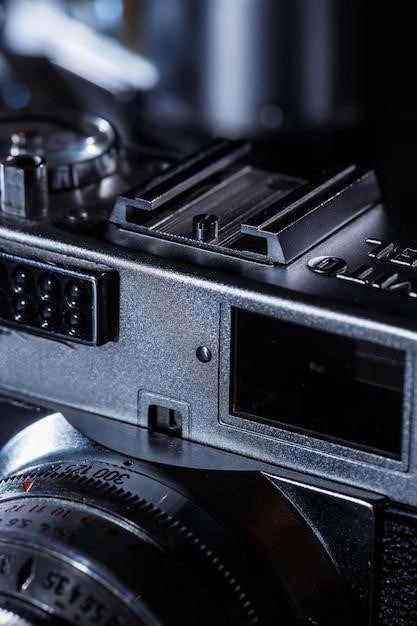Citroën C3 User Manuals⁚ A Comprehensive Guide
This guide provides a complete overview of Citroën C3 user manuals, encompassing online access, locating free versions, understanding terminology variations across regions, and navigating manuals for different model years. We cover key safety information, maintenance schedules, warranty details, and troubleshooting.
Accessing Citroën C3 Manuals Online
Accessing your Citroën C3’s user manual online is straightforward. Many manufacturers, including Citroën, host digital versions of their manuals on their official websites. Simply navigate to the Citroën support or owner’s section, usually accessible through a prominent link on their homepage. You’ll likely need to select your vehicle’s model year and sometimes even the specific trim level to locate the correct manual. Alternatively, independent websites specializing in car manuals may offer downloadable PDFs. However, always verify the source’s legitimacy to ensure you’re downloading an authentic and up-to-date version. Beware of unofficial sites that might offer outdated or inaccurate information. Remember to check the Citroën website first as the most reliable source for your C3 manual. Searching directly through the Citroën site using keywords like “C3 manual,” “C3 owner’s manual,” or “C3 user guide” will yield the best results. Using the correct model year is crucial to ensure you have the specific information for your vehicle.
Finding Free Citroën Manuals Online
While Citroën might not explicitly offer free downloads of their manuals on their official website, several avenues exist for finding free Citroën C3 manuals online. Many independent websites aggregate car manuals from various manufacturers, sometimes including free downloadable PDFs. However, always exercise caution when using such sources. Verify the source’s reliability before downloading any documents. Ensure the site’s reputation is trustworthy, checking for user reviews or security certifications. Outdated or inaccurate information can be harmful, so only trust established and reputable sources. Searching for “Citroën C3 manual PDF free download” might yield some results, but prioritize sites with clear attribution and terms of service. Remember that while free resources can be helpful, the manufacturer’s official website remains the most reliable source for accurate and up-to-date information. If a free online version is unavailable, consider purchasing a digital or printed copy from Citroën or a trusted third-party retailer for the most reliable information.
Different Names for User Manuals
The document guiding you through your Citroën C3’s operation might go by various names, depending on your region or the specific Citroën dealership. While “Owner’s Manual” is a common and widely understood term, you might also encounter “User Manual,” “Handbook,” “Operator’s Manual,” or “User Guide.” These terms all refer to the same essential document⁚ a comprehensive guide to using and maintaining your vehicle. The precise terminology used isn’t significant; the important factor is locating the correct document for your specific Citroën C3 model year. Some manuals may also include additional sections like a “Warranty Guide” or a separate “Maintenance Guide,” which are often bundled together or integrated within the main user manual. The key is recognizing that all these terms point to the same essential resource for understanding your vehicle’s features, operation, maintenance, and safety precautions. Don’t let the slight differences in naming confuse you; the content remains consistent across these variations.
Citroën C3 Model Years and Manuals
The Citroën C3 has been in production for several years, resulting in variations across model years and, consequently, their respective user manuals. Finding the correct manual is crucial for accurate information. The design, features, and technical specifications can change significantly from one model year to the next. A 2016 C3 manual will not accurately reflect the features or maintenance requirements of a 2023 model. Therefore, always ensure you’re using the manual specifically designed for your vehicle’s year of manufacture. Online databases often allow you to select your model year to access the appropriate manual. Pay close attention to the year printed on the manual itself or any identifying information provided by the manufacturer to confirm compatibility. Downloading the incorrect manual can lead to confusion and potentially unsafe operating practices. Always verify the year of manufacture displayed on your vehicle’s identification plate to ensure accurate matching with your downloaded manual. Accurate information is paramount for safe and efficient vehicle operation and maintenance.
Understanding Your Citroën C3 Manual
Your Citroën C3 manual is your primary resource for safe and efficient vehicle operation. It contains vital safety advice, maintenance schedules, warranty information, and troubleshooting guides. Familiarizing yourself with its contents is essential.
Key Information and Safety Recommendations
The Citroën C3 owner’s manual emphasizes safety, providing crucial information on various aspects of vehicle operation. It details the correct procedures for starting, driving, and parking your vehicle, including specific instructions for using safety features like seatbelts and airbags. Understanding these procedures is paramount to ensuring the safety of yourself and your passengers. The manual also includes vital details regarding the vehicle’s warning lights and indicators, explaining their meanings and the appropriate actions to take in response to them. This section is vital for preventing accidents and ensuring safe driving practices. Furthermore, the manual may contain crucial information about child safety seats, their proper installation, and usage guidelines. Thorough familiarity with this section prevents potential hazards and ensures optimal safety for children while travelling in the vehicle. Remember, consulting the manual before operating the vehicle is always recommended.
Maintenance and Warranty Information
Your Citroën C3’s owner’s manual contains a dedicated section outlining the recommended maintenance schedule. This schedule details the frequency of essential checks and services, such as oil changes, filter replacements, and tire rotations, crucial for maintaining optimal vehicle performance and longevity. Adhering to this schedule ensures your warranty remains valid and helps prevent costly repairs down the line. The manual specifies the types of fluids and lubricants recommended by the manufacturer, ensuring compatibility and optimal engine performance. Failure to use the specified fluids could void your warranty. The warranty section itself clearly defines the terms and conditions of your vehicle’s coverage, including the duration, the components covered, and any limitations or exclusions. Understanding this information protects your investment and ensures you’re aware of your rights as a vehicle owner. It’s recommended to keep all your maintenance records, including receipts for services performed, for future reference and to support any warranty claims. Regularly reviewing this section of the manual allows you to stay informed and proactive about your vehicle’s upkeep.
Using the Manual for Safe Operation
The Citroën C3 owner’s manual is not just a collection of technical specifications; it’s a critical resource for safe and efficient vehicle operation. Familiarizing yourself with the sections detailing the vehicle’s controls, including the dashboard displays, is paramount for understanding the car’s various functions and alerts. Understanding warning lights and their meanings will enable you to promptly address potential issues, preventing them from escalating into more significant problems. The manual provides clear instructions on the correct procedures for starting, driving, and parking your vehicle. This includes guidance on safe driving practices, such as proper lane changing techniques, maintaining a safe following distance, and appropriate speed adjustments for varying road conditions; Detailed explanations of the vehicle’s safety features, such as airbags, seatbelts, and anti-lock braking systems (ABS), are also included. Knowing how these systems work, when they activate, and their limitations can significantly enhance your safety on the road. Proper understanding of the vehicle’s limitations and capabilities, as outlined in the manual, is also critical to avoid accidents or malfunctions. By thoroughly reviewing and understanding the safe operating procedures detailed in your manual, you can maximize your safety and enhance the longevity of your Citroën C3.
Locating Specific Information
Finding the right information in your Citroën C3 manual is key. Use the index, table of contents, or search function (if available in your digital version) to quickly locate specific topics, troubleshooting steps, or maintenance schedules.
Troubleshooting and Repair Information
Your Citroën C3 manual likely contains a dedicated section for troubleshooting common issues. This section might include explanations of warning lights, diagnostic codes, and potential solutions for minor problems. For example, it could describe how to address a malfunctioning power window, a faulty headlight, or a problem with the central locking system. Remember, the depth of troubleshooting information varies depending on the manual’s edition and the model year of your Citroën C3. Always consult your owner’s manual for the most accurate and up-to-date information, as attempting repairs without proper knowledge may lead to further damage. If you encounter a problem you cannot resolve using the manual, seek professional help from a qualified mechanic or your Citroën dealership. They possess specialized tools and training to diagnose and repair complex issues.
Frequently Asked Questions (FAQs)
While a dedicated FAQ section isn’t always explicitly included in a Citroën C3 user manual, many online resources and forums offer answers to frequently asked questions. These commonly address topics like tire pressure monitoring system (TPMS) alerts, resetting the service indicator light, understanding warning lights displayed on the dashboard, and basic maintenance procedures like changing a tire or adding fluids. You might find FAQs on how to pair your phone to the car’s Bluetooth system, use the navigation system effectively, or troubleshoot audio issues. Searching online forums dedicated to the Citroën C3, or checking the official Citroën website, often yields helpful FAQs and troubleshooting advice. Remember that answers found online may not always be precise for your specific model year or trim level, so always cross-reference with your owner’s manual for definitive answers.
Additional Resources and Support
Beyond the official Citroën C3 user manual, several supplementary resources can enhance your understanding and ownership experience. The official Citroën website often hosts a dedicated support section with FAQs, video tutorials, and downloadable documents. Independent online forums and communities dedicated to Citroën C3 owners provide a platform for exchanging tips, advice, and troubleshooting solutions. These forums often feature experienced users who can offer guidance on specific issues. Consider checking YouTube for video tutorials related to common maintenance tasks or feature explanations. Local Citroën dealerships are also invaluable resources, providing expert assistance, scheduled maintenance, and repairs. Remember to always consult your owner’s manual as the primary source for information regarding your specific vehicle model and year. Don’t hesitate to contact Citroën customer service directly if you have questions not addressed elsewhere.







